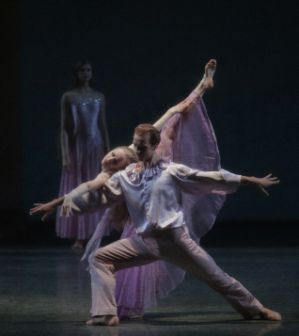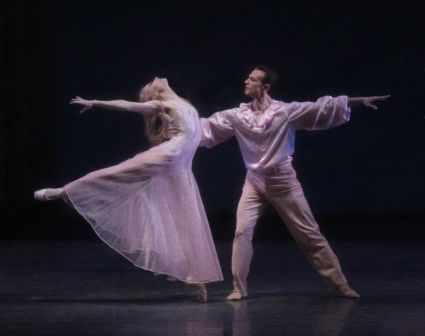From my Financial Times review of Tchaikovsky Suite no. 3, playing only until Sunday at New York City Ballet:
Balanchine discovered in Tchaikovsky, his fellow Petersburger, romance and imperial elegance entwined – or at least following fast on one another. But in this odd, late ballet, the choreographer kept them apart.
Tchaikovsky Suite No. 3 begins in a swoony state. Behind a foggy scrim, Ask la Cour kneeled in despair. The cause soon materialised: barefoot Venuses in long skirts of lilac tulle who did not do steps so much as drape themselves and their loose tresses around this forlorn dreamer.

Teresa Reichlen splayed out as Ask la Cour meets the span of her legs. Photo by Paul Kolnik courtesy of the New York City Ballet.
To find out what happens next, click here! Every click is a click for dance. And if you hit a registration wall, you only have to register once, ever after enjoying 30 articles a month free!

More swooning Romanticism (notice the man’s collar!): Janie Taylor and Sebastian Marcovici in the backward-driving waltz. Photo by Paul Kolnik courtesy of the NYCB.
At the end of this short review (click! click!), I mention how often Tchaikovsky travels between earth and air, small and large, soul and spirit. Because Tchaikovsky Suite No. 3 is all about such passages, transitions matter especially. And they extra especially matter in the final section, the theme and variations, which reiterates in dancing what the ballet as a whole lays out as drama.

Leave a Reply